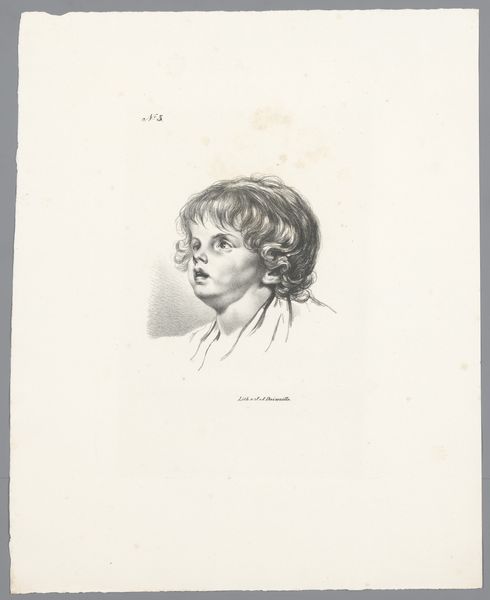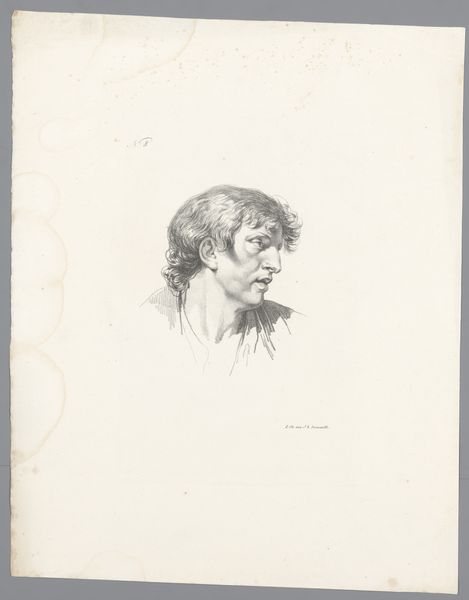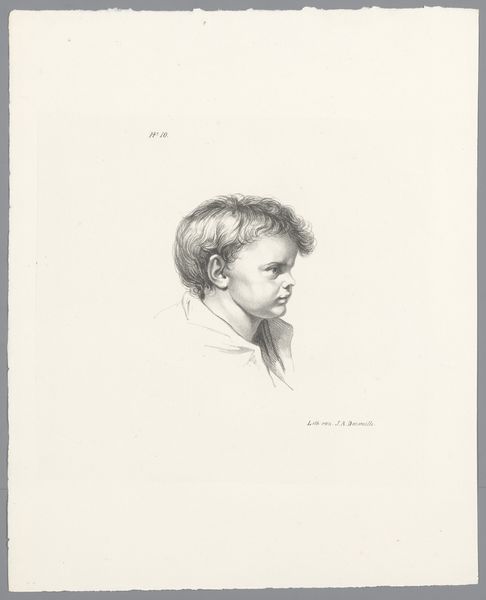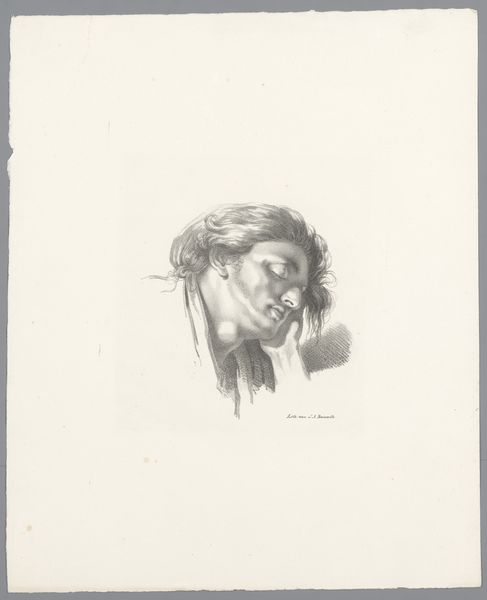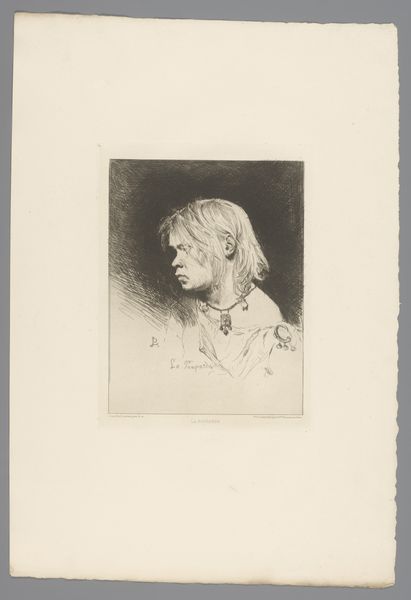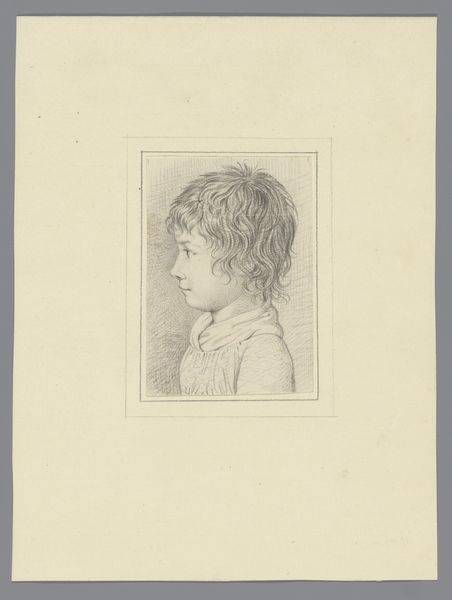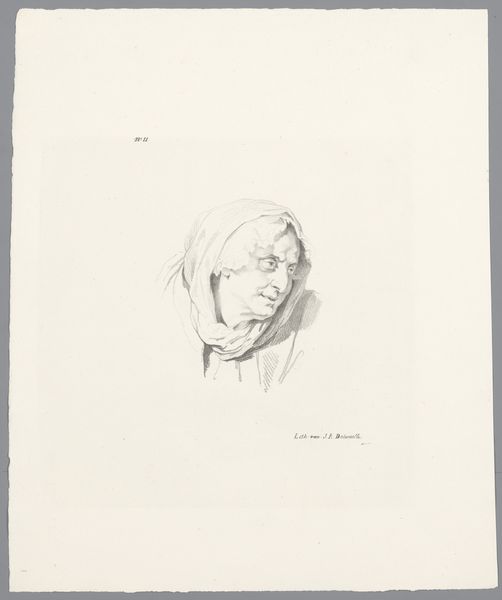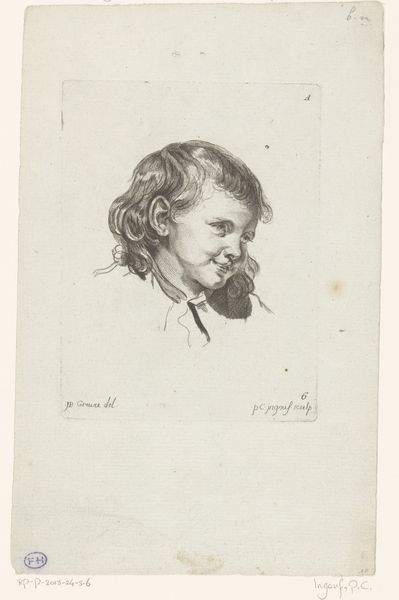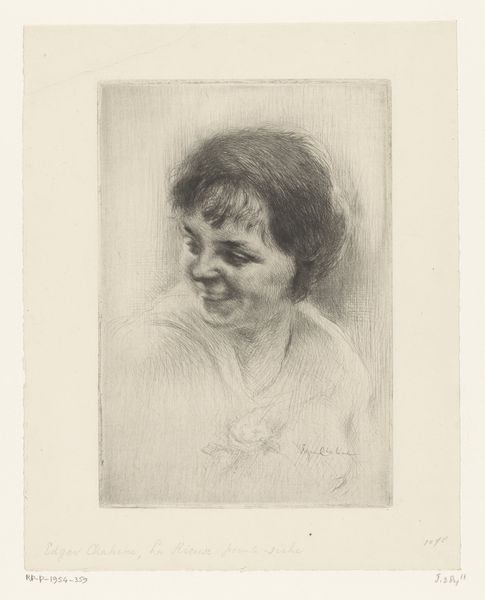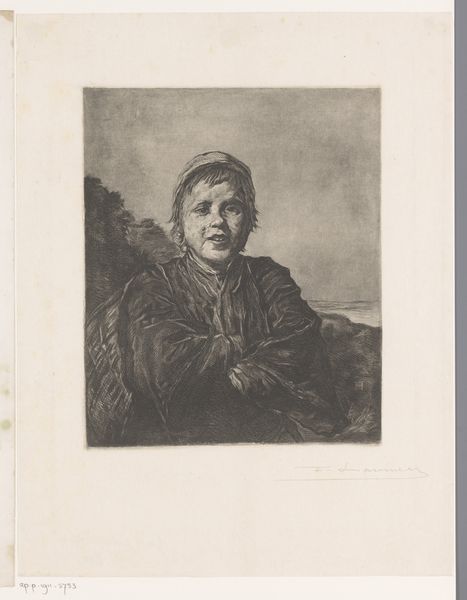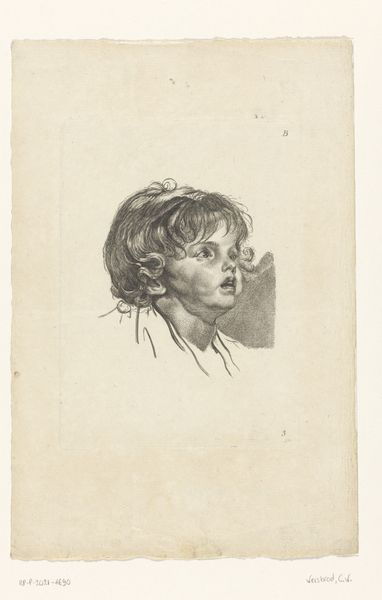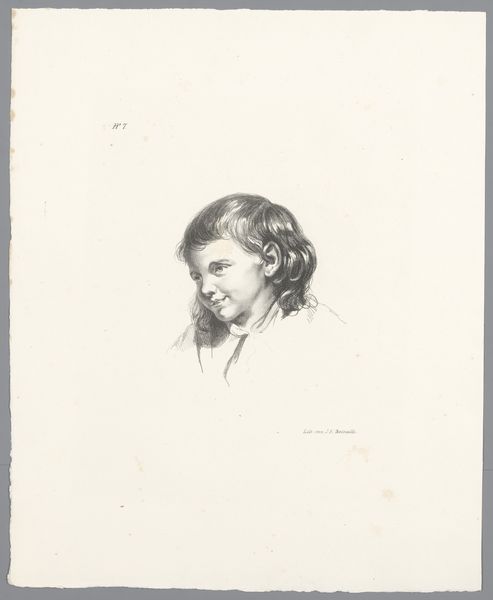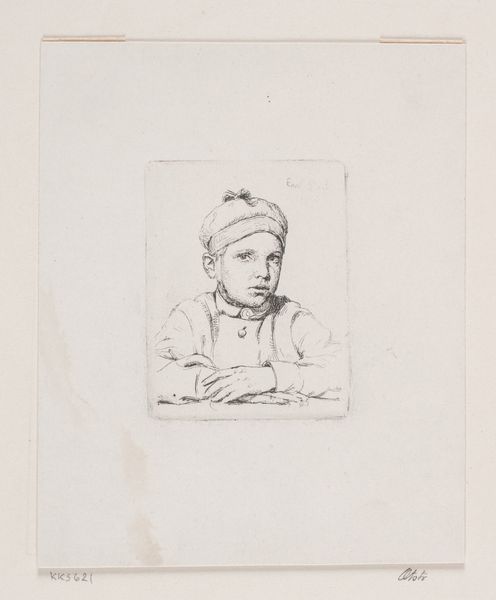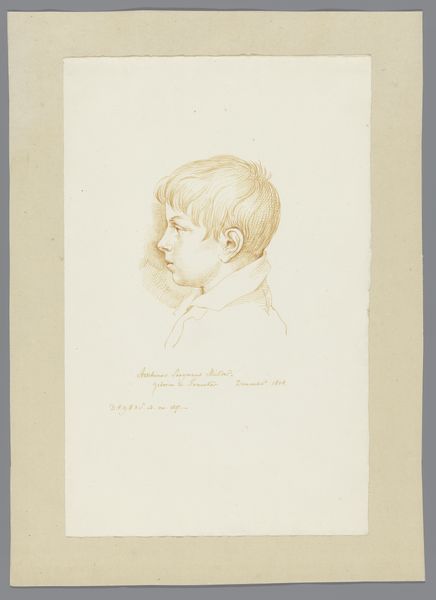
drawing, graphite
#
portrait
#
pencil drawn
#
drawing
#
neoclacissism
#
pencil sketch
#
figuration
#
portrait reference
#
pencil drawing
#
graphite
#
portrait drawing
#
academic-art
Dimensions: height 342 mm, width 275 mm
Copyright: Rijks Museum: Open Domain
Curator: Standing before us is "Kinderkopje," a graphite drawing made sometime between 1820 and 1830 by Jean Augustin Daiwaille. What are your initial impressions? Editor: The child's gaze is immediately striking; there's a seriousness that belies his young age. It’s not sentimental; there's a hint of melancholy, perhaps even vulnerability. The artist managed to convey this using so few lines. Curator: Absolutely. It reflects the Neoclassical interest in capturing emotional truth, yet within a carefully structured form. The classical influence is discernible in its balanced composition, and use of line to achieve naturalism. Editor: And I think we have to also consider how images of children functioned then. The elite was fascinated with sentimentalized versions of youth, but what about less-privileged children, who had no future ahead of them but relentless work? To me, that context shifts my perspective, and informs my impression. Curator: That’s a valid point. We see echoes of this concern for portraying innocence, but you're right; Daiwaille was working in a period defined by inequalities, reflected in these portraits. It makes one consider the potential subjects whom artists don't capture. Editor: Precisely! And beyond the technical mastery of the shading and the fine lines to render the boy's soft features, the political dimensions can add another dimension. Does his social positioning alter the meaning and purpose behind immortalizing the boy on paper? How was it received then, versus now? Curator: Indeed. There is also the artistic aspect of portraiture during the era, capturing the very essence of the subject beyond their socio-economic situation. A study in emotions transcending the surface presentation. Editor: It definitely offers plenty of different entry points for interpreting its significance. I wonder about who he grew up to be and if he overcame his potential limitations of a young boy during the Neoclassical era. Curator: I completely agree. A humble yet potent drawing to reflect on society in flux.
Comments
No comments
Be the first to comment and join the conversation on the ultimate creative platform.
